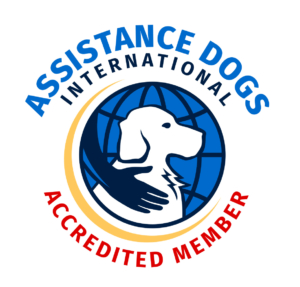Types of Assistance Dogs
There are many types of assistance dogs being used worldwide. The determining factor in which type of service dog used is the disability the recipient has. There are three types of assistance dogs: guide dogs, hearing dogs, and service dogs. This last category is where National Service Dogs fits in, as you could probably tell from our name!
Guide Dogs are used by individuals with visual impairments. They help their handler by avoiding obstacles, navigating steps and curbs, and avoiding traffic and dangerous situations. Guide dogs wear a special harness that has a raised handle on it which provides an outlet for communication of the dog’s body movement and provides the actual guiding. Larger breed dogs are used in order to allow the handle to comfortably reach the handler. Guide dogs must be extremely obedient and highly focused on their handler.
Hearing dogs are used by individuals with hearing impairments. They are trained to alert to different sounds including but not limited to the phone ringing, smoke alarms, the doorbell, name calls and much more! They are trained with hand commands so high focus is a must. There are relatively few breed restrictions on these dogs; any size will do! Hearing dogs wear orange, either on their vest or leash.
Service dogs for individuals with disabilities other than those related to vision or hearing. Autism service, seizure alert, diabetic response, mobility assistance, and mental health dogs are all common. These dogs are trained in a variety of ways to complete the tasks specific to their handler. The breed and temperament is matched to what is required of them.
For more information on assistance dogs, please see the ADI website at www.assistancedogsinternational.org/aboutAssistanceDogs.php.
All of these dogs must meet the standards that ADI sets out for public access. Come read on Thursday to find out what this entails! Tomorrow we will be discussing the laws surrounding public access for assistance dogs and their handlers.



